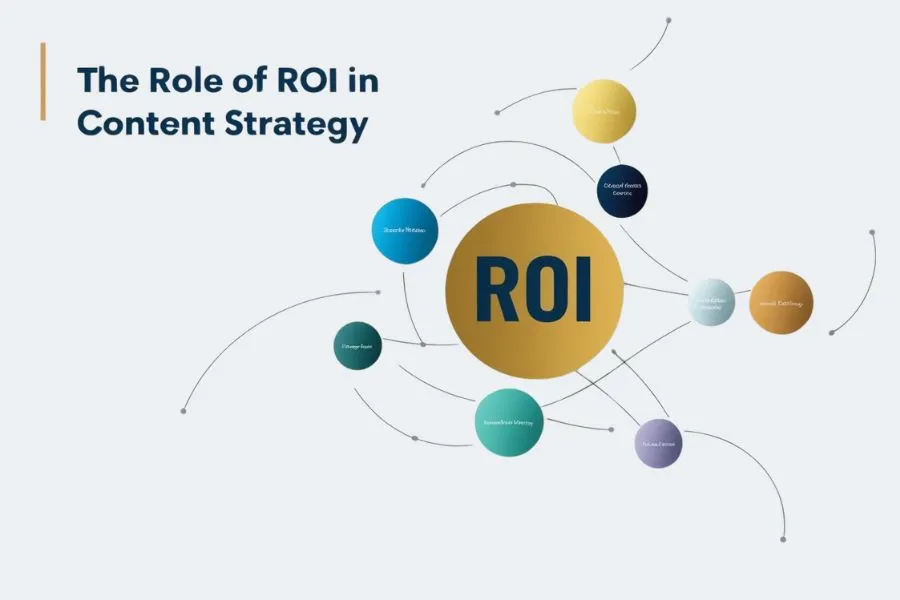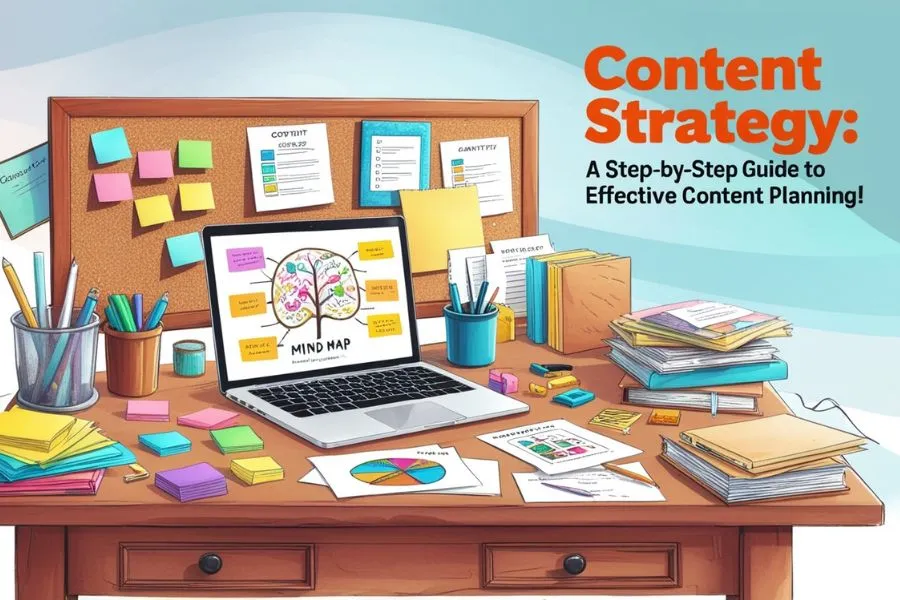Table of Contents
Introduction
Creating high-quality content without a clear plan is like driving without a destination, pointless & wasteful. A well-thought-out content strategy ensures your efforts hit the mark, attract the right audience, and drive meaningful results. But what exactly is content strategy, and why is it the backbone of effective digital marketing? In this guide, we will explore content planning, audience research, content goals, content calendar, ROI, why content strategy cannot be automated, content strategy services.
Understanding Content Strategy
Defining Content Strategy
At its core, a content-strategy is a roadmap that guides the creation, distribution, and management of content. It’s about ensuring that every piece of content aligns with your business goals while resonating with your audience.
Step-by-Step Guide to Content Planning

Step 1: Understand Your Audience
To create impactful content, you need to understand your audience thoroughly. Think of it as preparing for a challenge—the more you know, the better your chances of success. You can use different of tool like social media insights and Google Analytics to gather valuable data. Based on this information, develop detailed buyer personas to represent your ideal customers.
Example:
- If your audience consists of young professionals, focus on LinkedIn insights to understand their interests and behaviors.
- For a brand targeting teens, Instagram and TikTok analytics may provide better insights.
Step 2: Define Your Content Goals
Set goals that align with your broader business objectives. Whether it’s boosting brand awareness, driving website traffic, or improving conversion rates, clear goals guide your content-strategy.
Example:
- For brand awareness, you should prioritize reach and impressions.
- For lead generation, focus on click-through rates (CTR) and form submissions.
Step 3: Audit Your Existing Content
Evaluate your current content to understand what’s working and what needs improvement. Identify high-performing pieces, content gaps, and opportunities for repurposing.
Example:
- If a blog post is attracting significant traffic, consider turning it into a video or infographic.
- Analyze underperforming posts to understand whether the issue lies in the topic, format, or distribution.
Step 4: Build a Content Calendar
A content calendar helps you to keep yourself organized. Use tools like Trello, Asana, or CoSchedule to map out content topics, formats, and publishing schedules.
Example:
- Schedule a blog post on “Increase audience on website tips” in August.
- Plan social media content around major holidays like Black Friday or New Year’s Eve.
Social Media Content Calendar In Excel Free Download & Use!
Step 5: Execute and Monitor Performance
Bring your strategy to life and show with others by publishing your content. Continuously track performance metrics such as engagement rates, click-through rates, and conversion rates to evaluate success and identify areas for improvement.
Example:
- If an Instagram post receives high engagement, consider promoting it further using ads.
- Use tools like Google Data Studio or Hootsuite Analytics to monitor results and tweak your strategy accordingly.
Why Content Strategy Cannot Be Automated
Automating content strategy can undoubtedly save time, but it compromises the essential human touch required to foster meaningful connections with audiences. While AI excels at data analysis, it often falls short in understanding the emotional subtleties that resonate with a target audience.
For example:
- Emotional Appeal: A clothing brand targeting environmentally conscious consumers needs to craft messaging that reflects genuine empathy for sustainability. AI-generated content may identify “eco-friendly” as a trend, but it might fail to convey an authentic narrative that aligns with the audience’s values.
- Cultural Sensitivity: In a global marketing campaign, subtle cultural differences play a pivotal role. AI might overlook or misinterpret these nuances, potentially leading to generic or even offensive content.
- Storytelling: Story-driven campaigns, such as a non-profit sharing personal stories of individuals they’ve helped, require creativity and emotional depth. AI lacks the capability to weave such heartfelt and compelling narratives.
The Role of ROI in Content Strategy

Return on Investment (ROI) serves as a critical benchmark for evaluating the success of your content-strategy. To calculate ROI, divide your total returns by your total investment. For example, if a blog post generates $1,000 in sales but costs $100 to produce, the ROI is tenfold—a significant achievement.
Regularly analyzing ROI helps you identify what works, optimize your efforts, and enhance your strategy. High-performing content can guide resource allocation, while low-performing content highlights areas for improvement.
Additional Examples:
- Social Media Campaign:
- Investment: $500 in ad spend.
- Returns: $2,500 in sales.
- ROI: 2500/500=5 OR 500%.
- Email Marketing:
- Investment: $200 (including design and platform costs).
- Returns: $1,000 in revenue.
- ROI: 1000/200=5 OR 500%.
- Video Content:
- Investment: $800 for production.
- Returns: $3,200 from new customer acquisitions.
- ROI: 3200/800=4 OR 400%.
Content Strategy Services
We offer expert content writing and strategy services designed to meet your business needs. With proven results and industry expertise, we can help elevate your content efforts.
Conclusion
A robust content strategy is non-negotiable in today’s competitive digital world. By focusing on audience research, setting clear goals, and measuring ROI, you can transform your content efforts into a powerful business tool. Remember, the key is consistency, quality, and a human touch.
FAQs
1. What is a content strategy?
A content strategy is a plan for creating and managing content to achieve specific business goals.
2. How do I start creating a content strategy?
Begin with audience research, set clear goals, and map out a content calendar.
3. Why is audience research essential for content planning?
Help to drive better engagement and results.
4. Can the content strategy be fully automated?
No, the human element is essential for understanding emotional nuances and building connections.
5. How do content strategy services help businesses?
They offer expertise, save time, and deliver tailored strategies that align with your goals.

